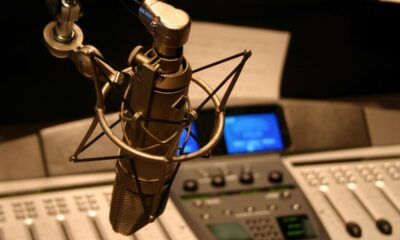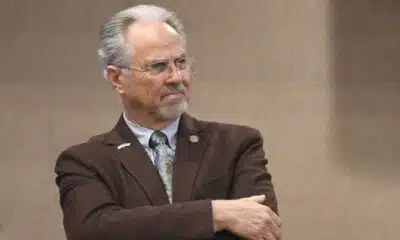
AP Photo/Evan Vucci
Linda J. Bilmes, Harvard Kennedy School
The U.S. secretary of commerce oversees the smallest but arguably most complex of all Cabinet-level departments.
Established as a distinct entity in 1913, it has evolved into a sprawling organization with 13 bureaus spanning a wide variety of critical areas that include weather forecasting, conducting the census, estimating gross domestic product, managing fisheries, promoting U.S. exports, setting standards for new technology and allocating radio frequency spectrum. It is even home to one of America’s eight uniformed military services, the NOAA Commissioned Officer Corps with its own fleet of ships, aircraft and 321 commissioned officers. Its main mission is to monitor oceans, waterways and the atmosphere in support of the National Oceanographic and Atmospheric Administration.
As a result, there is no other Cabinet position that has to engage with lawmakers in Congress across so many disparate technical issues, committees and stakeholders. This medley reflects both the historical evolution of the U.S. economy and a degree of political happenstance.
I served at the Commerce Department in several roles, including as chief financial officer and assistant secretary for administration, management and budget, and have watched several administrations attempt to craft an overarching strategic narrative around this diverse set of missions.
Besides the difficult job of formulating a unifying strategy for the department’s many activities, I believe there are three specific challenges in particular that await the next secretary, a position that requires Senate confirmation.

AP Photo/Manuel Valdes
Commerce: A sprawling bureauocracy
From its earliest days, the Commerce Department has collected trade statistics, overseen lighthouses and issued patents and trademarks. But since then, its portfolio has expanded significantly.
In 1970, NOAA was placed inside Commerce, partly as a result of a feud between President Richard Nixon and his interior secretary, Wally Hickel, over the Vietnam War. NOAA now accounts for more than half the department’s US$11 billion budget and has created some peculiar departmental overlaps.
As President Barack Obama joked in his 2011 State of the Union speech, “The Interior Department is in charge of salmon while they’re in freshwater, but the Commerce Department handles them when they’re in saltwater.”
While the joke wasn’t quite accurate – a division of Commerce manages salmon in both fresh and saltwater, though Interior does restore their habitat – it does reflect some odd situations. For example, when it comes to sea turtles, Interior oversees their nests on shore, whereas Commerce protects them in the open sea.
Due to the department’s broad interests, the commerce secretary has a role in nearly every important issue facing the country.
He or she needs to be a quick study who is able to multitask, respond to congressional inquiries on a myriad of topics, as well as manage a 50,000-strong workforce including economists, scientists, statisticians, meteorologists and other experts.
One example of the caliber of experts Commerce oversees is the National Institute for Standards and Technology, which does cutting-edge research in bioscience, artificial intelligence, materials science and industrial measurement standards. The institute currently has five Nobel laureates in physics and chemistry on its staff and is on the front lines on cybersecurity and national defense.
While it’s unclear how Trump nominee Howard Lutnick plans to unify Commerce’s work, the previous secretary, Gina Raimondo, outlined five strategic goals for her department, including driving U.S. global competitiveness, using data to find new opportunities and modernizing its services and capabilities.
The Senate Committee on Commerce, Science and Transportation is holding a hearing on Jan. 29, 2025, to consider Lutnick’s nomination.
Challenge No. 1: Another census is just around the corner
The incoming secretary’s biggest challenge will be the decennial census due on April 1, 2030.
The census counts every person living in the U.S. and five U.S. territories. Census data is used to apportion the number of seats each state has in the House of Representatives and to adjust or redraw electoral districts, as well as to apportion federal funding allotted to each district. Consequently, the census receives huge attention in Congress. It will be an especially hot topic because the data collected in the 2020 census had errors due to the pandemic.
Conducting the census is highly labor intensive and takes many years of planning and preparation, which ramp up now.
The Commerce Department must hire 500,000 temporary workers, open local offices and run large-scale field tests, award billions of dollars in contracts, and work with every state, local, county and tribal government in the country to map where people live. This includes dorms, homeless shelters, nursing homes, prisons, oil rigs, boats, tents, hospitals and mobile homes as well as houses and apartments.
The Census Bureau says it began planning for 2030 as far back as 2019 and is preparing to do a test census in 2026.
Trump administration policies, such as ongoing efforts to round up and deport undocumented migrants, will make it even more challenging to count immigrants and other historically hard-to-reach groups. During his first term, President Donald Trump sought to prevent unauthorized immigrants from being counted at all – but ran out of time.

Sim Aberson/NOAA via AP
Challenge No. 2: NOAA on the front lines of climate change fight
Second, NOAA is likely to be in the political crosshairs, due to its role as a global leader in studying oceans, climate and coastal ecosystems.
It tracks rising sea levels, ocean acidification and extreme weather events, and forecasts their impact on fisheries, shipping, marine protected areas and habitats. It also runs the National Weather Service and issues severe storm warnings. These and many other NOAA activities are vital to monitoring the pace of climate change and helping Americans adapt.
NOAA’s mission and its budget are sure to be scrutinized by the Trump administration, which has already reversed a variety of policies meant to slow the pace of climate change. Trump himself has called climate change a “hoax.” That and policy proposals that seek to break up or privatize NOAA suggest many of NOAA’s climate-related activities could be under threat.
Challenge No. 3: The patent problem
A third challenge the incoming secretary will face is an ongoing crisis at the Patent and Trademark Office.
Unlike most federal agencies, the Patent and Trademark Office is funded by user fees collected from applicants rather than from tax revenue. This is supposed to make it more efficient and easier to hire staff quickly, but the model is under stress due to a shortage of patent examiners with skills in assessing science, technology, engineering and math applications. The agency currently has a backlog of over 800,000 unexamined patent applications – near an all-time high.
The backlog is likely to continue to grow as artificial intelligence and other state-of-the-art technologies accelerate the discovery cycle, but the slow process of patent approval – two years on average – can throw a wrench in it.
Patents and trademarks are critical to U.S. competitiveness because they reward innovation and discovery and help inventors attract investors.
The Trump administration’s broad federal hiring freeze is likely to worsen the Patent and Trademark Office’s staffing issues, while the back-to-office mandate may make it harder to recruit patent examiners, who often work remotely.
On top of this, Elon Musk, whose companies hold large numbers of patents and who already holds tremendous sway in the Trump administration, says “patents are for the weak” and compared them with landmines in warfare. “They don’t actually help advance things,” he said. “They just stop others from following you.”
In addition to these three areas, Commerce’s roles in international trade, telecommunications, industrial security and other matters could also become epicenters of any global crisis.
This all adds up to an uncomfortable mix of political and operational challenges for the next secretary.
This story is part of a series of profiles explaining Cabinet and high-level administration positions.
Linda J. Bilmes, Daniel Patrick Moynihan Senior Lecturer in Public Policy and Public Finance, Harvard Kennedy School
This article is republished from The Conversation under a Creative Commons license. Read the original article.






















































